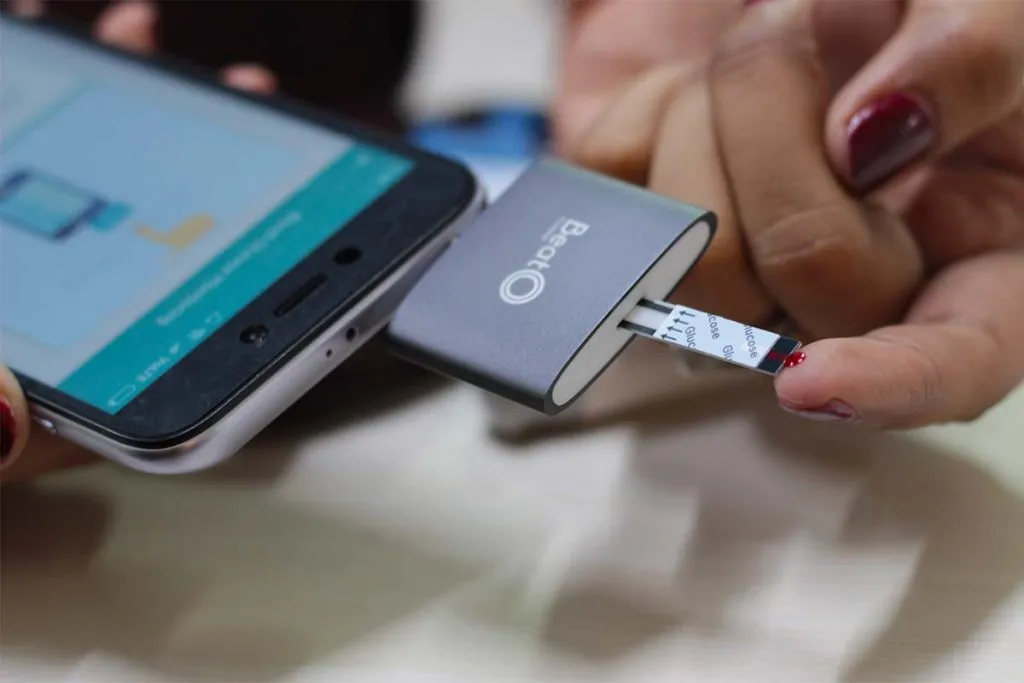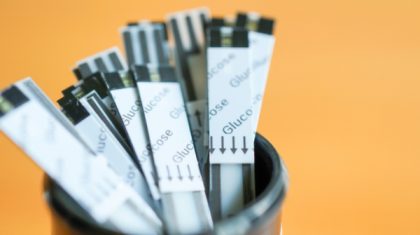Unlike many discoveries and inventions, the glucometer was an unknown device until 1962. The credit for its development goes to Leland Clark and Ann Lyons. Interestingly, back then, the glucose concentration was measured using a technology called colourimetric. It involved the conversion of glucose in the blood into dye. The medium used for this conversion process was a dedicated enzyme (nitrocellulose) layered on glucometer strips. Once the process was complete, a focused light was beamed onto this dye patch. The resultant absorption of the light by the dye was then measured to arrive at the blood glucose factor.

Undoubtedly, this form of blood sugar measurement was not only cumbersome but also took a lot of time. Over the years, innovators, along with the scientific community, revamped and redesigned the device and the strips resulting in what we have today—a highly reliable and compact blood sugar tracker. However, as a user, you must follow certain guidelines for reliable results. Read on to learn about these rules/principles.

Importance of Accurate Blood Glucose Monitoring
The importance of accurate blood glucose monitoring is not something that can be taken lightly or compromised. Faulty monitoring can be disastrous. Carelessness can lead to irreversible damage, which in turn may evolve into life-threatening diseases and organ malfunctions. It is highly advisable to exploit portable glucometer/glucometer strips for home monitoring and then compare the results with lab tests (occasionally). This reduces the chances of going off track with your blood glucose readings.
Understanding the Technology Behind Diabetic Strips
Earlier, test strips, as mentioned above, used colourimetric technology. The blood glucose was typically measured using nitrocellulose to convert the blood glucose into a dye of equal proportion. The reading was then measured through the absorption of light using a reflectance spectrophotometer.
On the other hand, the current generation of sugar test strips is highly sophisticated, and even the meters which are used to display the reading are equally new age, technology-driven. Today, instead of the colourimetric principle, electro-chemistry is used. The test strips may appear thin and neutral, but they are made up of different layers, each with its own function. The new generation strip typically has the following layers –
- Hydrophilic top layer
- Pressure-sensitive spacer
- Enzyme electrode
- Another support layer
- Mediator
Through the capillary action, the blood is first forced down. The glucose in the blood then reacts with the enzyme electrode. The resultant glucose reading obtained through the reaction between the enzyme (oxidase) and the electrode is then passed onto the device, typically a glucometer, in the form of signals. This is also called the electrochemical process.
Factors That Can Impact Diabetic Strip Accuracy
Blood glucose test strips used in portable glucometers are highly sophisticated and built using Nano-technology. Even the critical components employed are highly sensitive. Even slight deviation from its normal state can make it underperform, malfunction, and thereby offer incorrect blood glucose readings. At the very outset, you should make sure that the test strips are compatible with your device. It is a good idea to buy test strips and glucometers belonging to the same brand. Some of the most common factors that can impact test strips include –
- Environmental conditions such as extreme heat, cold, and moisture can change the chemistry of the test strip. Make sure you store them in a space that is devoid of temperature and moisture fluctuations. The reason is the enzyme within the strip is highly reactive to temperature and moisture switches.
- Use clean hands to set up the strip. Oily or stained fingers can corrupt the strips. This will invariably offer faulty reading.
- Make sure you offer the strip the right amount of blood. Many times, users, out of fear, provide frugal samples, which may cause the glucometer to show incorrect measurements.
- Do not initiate blood glucose tests when you are ill, after work-out, or post-religious / festive fasting. It will send your readings haywire.
- Finally, make sure the sugar strips are active in terms of the expiry date.
Some of the lesser factors responsible for the malfunction of test strips are: testing at high altitudes and extreme geographies.
Proper Handling and Storage of Diabetic Strips
As mentioned above, certain do’s and don’ts can not only offer accurate readings but also enhance the life and the quality of diabetes test strips. So, what are these stipulations? At the very outset, make sure you keep it away and out of the reach of children because they have an intuitive mind. Exploring these sensitive test strips can corrupt them. Another practice that guarantees longer life and freedom from malfunction is the environment in which it is stored. Strips should typically be stored at room temperature and moderate humidity. The recommended conditions are—around 25 °C and relative humidity level at 50%. Storing them in the “manufacturer” provided box/container also makes sense. From a personal perspective, hygiene and cleanliness also count. Make sure your hands are free from ointments, creams while your fingers are free from water or any liquid.
User Technique and Best Practices for Reliable Results
One of the common reasons for reading malfunction is drained/discharged batteries. No doubt the device will work, but the chances are it will provide highly fluctuating results, which may force you to rush to the hospital/doctor. Read the user guide. Does the manufacturer recommend cleaning? Does it have a test strip and liquid control solution to set/reset, or do a dummy run for accuracy and reliability? If yes, then make sure you do a fake test once in a while. Always keep the device away from sunlight and electric fields, especially mobile phones. Finally, occasionally, visit a lab for a blood glucose test and compare the reading with your in-house data. Remember, there is bound to be a difference but not more than (15%) / 15 mg/dl, and this will happen most of the time, irrespective of which glucometer strips you use.
Quality Control and Certification of Diabetic Strips
Using a clinically certified or medically proven glucometer and strips can make a huge difference in the long run. It makes sense to buy ISO or any certified blood sugar tracker for long-term use and also for accurate readings. One of the star performers and a popular glucometer brand is BeatO. It has several certifications and boasts a compact design. Even its sugar test strips are designed using complex, layered technology.
Comparing Different Diabetic Strip Brands for Accuracy
Most glucometer manufacturers recommend their own test strips. As a user, it becomes imperative to choose not only a strip that reflects state-of-the-art underlying technology but also a matching device. What you need to look out for is speed and accuracy. Make sure your random lab blood sugar matches up with the home readings—with a fluctuation of around 15%. As mentioned above, the BeatO device and blood glucose test strips are highly dependable and made from Nanotechnology.
Read More: Exploring Different Types of Diabetes: Type 1, Type 2, and Gestational Diabetes
Final Analysis
Diabetes test strips may appear simple, but their underlying structure is quite complex. As a user, make sure you understand its layered design and its importance in fetching reliable results every time. Check out user reviews, visit the manufacturer’s website/blog, and get first-hand information about their product(s). Make an informed decision. This will save you from unwanted visits to brick-and-mortar labs, although they, too, are a critical part of blood glucose monitoring.
Disclaimer :
It is crucial to monitor your blood sugar levels using a smartphone-connected glucometer on a regular basis. If you feel doubtful about whether or not you should consume a particular item, you should do a quick sugar check before and after you consume it.
Being a person with diabetes, you can enjoy your favourite treats by making sure that you keep the portion size in check. Overindulging can lead to a spike in your sugar levels. It’s important to discuss with your physician how a food item can affect your blood glucose levels. If you have any doubts about what you can include as a part of your diabetes diet, you should always speak to your doctor or health coach.
Disclaimer:The content of this article is compiled information from generic and public sources. It is in no way a substitute, suggestion, or advice for a qualified medical opinion. Always consult a specialist or your own doctor for more information. BeatoApp does not claim responsibility for this information .
Dr. Navneet Agarwal is an established and highly skilled Diabetology with over 25 years of experience in Diabetology & Obesity. He is well-regarded for his quality and patient-centered diabetes care. Also, keep track of your blood sugar levels with a Doctors’ approved smart glucometer and elevate your healthcare routine.




